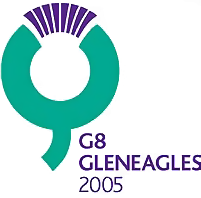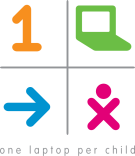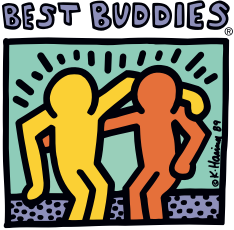Related Research Articles

Engineering is the use of scientific principles to design and build machines, structures, and other items, including bridges, tunnels, roads, vehicles, and buildings. The discipline of engineering encompasses a broad range of more specialized fields of engineering, each with a more specific emphasis on particular areas of applied mathematics, applied science, and types of application. See glossary of engineering.
The DARPA Grand Challenge is a prize competition for American autonomous vehicles, funded by the Defense Advanced Research Projects Agency, the most prominent research organization of the United States Department of Defense. Congress has authorized DARPA to award cash prizes to further DARPA's mission to sponsor revolutionary, high-payoff research that bridges the gap between fundamental discoveries and military use. The initial DARPA Grand Challenge was created to spur the development of technologies needed to create the first fully autonomous ground vehicles capable of completing a substantial off-road course within a limited time. The third event, the DARPA Urban Challenge extended the initial Challenge to autonomous operation in a mock urban environment. A more recent Challenge, the 2012 DARPA Robotics Challenge, focused on autonomous emergency-maintenance robots, and new Challenges are still being conceived.
The Association for Progressive Communications (APC) is an international network of organizations that was founded in 1990 to provide communication infrastructure, including Internet-based applications, to groups and individuals who work for peace, human rights, protection of the environment, and sustainability. Pioneering the use of ICTs for civil society, especially in developing countries, APC were often the first providers of Internet in their member countries.

A collaboration tool helps people to collaborate. The purpose of a collaboration tool is to support a group of two or more individuals to accomplish a common goal or objective. Collaboration tools can be either of a non-technological nature such as paper, flipcharts, post-it notes or whiteboards. They can also include software tools and applications such as collaborative software.
The global digital divide describes global disparities, primarily between developed and developing countries, in regards to access to computing and information resources such as the Internet and the opportunities derived from such access. As with a smaller unit of analysis, this gap describes an inequality that exists, referencing a global scale.
Participatory design is an approach to design attempting to actively involve all stakeholders in the design process to help ensure the result meets their needs and is usable. Participatory design is an approach which is focused on processes and procedures of design and is not a design style. The term is used in a variety of fields e.g. software design, urban design, architecture, landscape architecture, product design, sustainability, graphic design, planning, and health services development as a way of creating environments that are more responsive and appropriate to their inhabitants' and users' cultural, emotional, spiritual and practical needs. It is also one approach to placemaking.
In planning and policy, a wicked problem is a problem that is difficult or impossible to solve because of incomplete, contradictory, and changing requirements that are often difficult to recognize. It refers to an idea or problem that cannot be fixed, where there is no single solution to the problem; and "wicked" denotes resistance to resolution, rather than evil. Another definition is "a problem whose social complexity means that it has no determinable stopping point". Moreover, because of complex interdependencies, the effort to solve one aspect of a wicked problem may reveal or create other problems. Due to their complexity, wicked problems are often characterized by organized irresponsibility.

A water supply network or water supply system is a system of engineered hydrologic and hydraulic components that provide water supply. A water supply system typically includes the following:
- A drainage basin
- A raw water collection point where the water accumulates, such as a lake, a river, or groundwater from an underground aquifer. Raw water may be transferred using uncovered ground-level aqueducts, covered tunnels, or underground water pipes to water purification facilities.
- Water purification facilities. Treated water is transferred using water pipes.
- Water storage facilities such as reservoirs, water tanks, or water towers. Smaller water systems may store the water in cisterns or pressure vessels. Tall buildings may also need to store water locally in pressure vessels in order for the water to reach the upper floors.
- Additional water pressurizing components such as pumping stations may need to be situated at the outlet of underground or aboveground reservoirs or cisterns.
- A pipe network for distribution of water to consumers and other usage points
- Connections to the sewers are generally found downstream of the water consumers, but the sewer system is considered to be a separate system, rather than part of the water supply system.

Open educational resources (OER) are teaching, learning, and research materials intentionally created and licensed to be free for the end user to own, share, and in most cases, modify. The term "OER" describes publicly accessible materials and resources for any user to use, re-mix, improve, and redistribute under some licenses. These are designed to reduce accessibility barriers by implementing best practices in teaching and to be adapted for local unique contexts.

A hackathon is an event where people engage in rapid and collaborative engineering over a relatively short period of time such as 24 or 48 hours. They are often run using agile software development practices, such as sprint-like design wherein computer programmers and others involved in software development, including graphic designers, interface designers, product managers, project managers, domain experts, and others collaborate intensively on engineering projects, such as software engineering.

The 31st G8 summit was held on 6–8 July 2005 at the Gleneagles Hotel in Auchterarder, Scotland and hosted by Prime Minister Tony Blair. The locations of previous G8 summits to have been hosted by the UK include: London ; and Birmingham (1998). It is the first G8 summit to be held in Scotland. A sixth UK summit was held in Lough Erne in 2013; and a seventh UK summit was held in Carbis Bay in 2021.

One Laptop per Child (OLPC) was a non-profit initiative established with the goal of transforming education for children around the world; this goal was to be achieved by creating and distributing educational devices for the developing world, and by creating software and content for those devices.
Amy Smith is an American inventor, educator, and founder of the MIT D-Lab and senior lecturer of mechanical engineering at MIT.

The Group of Five (G5) encompasses five nations which have joined together for an active role in the rapidly evolving international order. Individually and as a group, the G5 nations work to promote dialogue and understanding between developing and developed countries. The G5 seek to find common solutions to global challenges. In the 21st century, the G5 were understood to be the five largest emerging economies

The 34th G8 summit was held in the town of Tōyako, Hokkaido, Japan, on July 7–9, 2008. The locations of previous summits hosted by Japan include Tokyo and Nago, Okinawa (2000). The G8 summit has evolved beyond being a gathering of world political leaders to become an occasion for a wide variety of non-governmental organizations, activists and civic groups to congregate and discuss a multitude of issues.

Best Buddies International is an American nonprofit 501(c)(3) organization. It consists of volunteers that create opportunities for people with intellectual and developmental disabilities (IDD). The program's main purpose is to allow volunteers to be paired up with a buddy with an intellectual and developmental disability and provide them with a friend or a mentor. Best Buddies is the world's largest organization dedicated to ending the social, physical and economic isolation of the 200 million people with IDD. It is an international movement that has spread to over 54 countries worldwide.
Sustainia, formerly the Copenhagen Climate Council, is a global collaboration between international business and science founded by Erik Rasmussen founder of the leading independent think tank in Scandinavia, Monday Morning, based in Copenhagen. The councilors of the Copenhagen Climate Council have come together to create global awareness of the importance of the UN Climate Summit (COP15) in Copenhagen, December 2009, and to ensure technical and public support and assistance to global decision makers when agreeing on a new climate treaty to replace the Kyoto Protocol from 1997.

The Nigerian Economic Summit Group (NESG) is a private sector-led think-tank and policy advocacy group based in Nigeria. The NESG promotes sustainable growth and the development of the Nigerian economy. It is a non profit, non-partisan and apolitical organization. It was founded in 1994 and was incorporated as a non-profit in 1996.
IDIN (International Development Innovation Network) is a global network led by Massachusetts Institute of Technology's D-Lab. It is funded by the United States Agency for International Development and Global Development Lab.
Open source is source code that is made freely available for possible modification and redistribution. Products include permission to use the source code, design documents, or content of the product. The open-source model is a decentralized software development model that encourages open collaboration. A main principle of open-source software development is peer production, with products such as source code, blueprints, and documentation freely available to the public. The open-source movement in software began as a response to the limitations of proprietary code. The model is used for projects such as in open-source appropriate technology, and open-source drug discovery.
References
- ↑ "IDDS 2007". January 23, 2009. Archived from the original on April 24, 2013. Retrieved 2012-07-09.
- ↑ "International Development Design Summits". MIT D-Lab.
- 1 2 3 Heather Manning (2007-07-13). "Making a difference in the developing world". MIT News.
- ↑ Jonathon Greenblatt (2007-08-14). "South-South Design Flourishes at MIT Summit". World Changing. Archived from the original on 2007-08-26. Retrieved 2007-08-26.